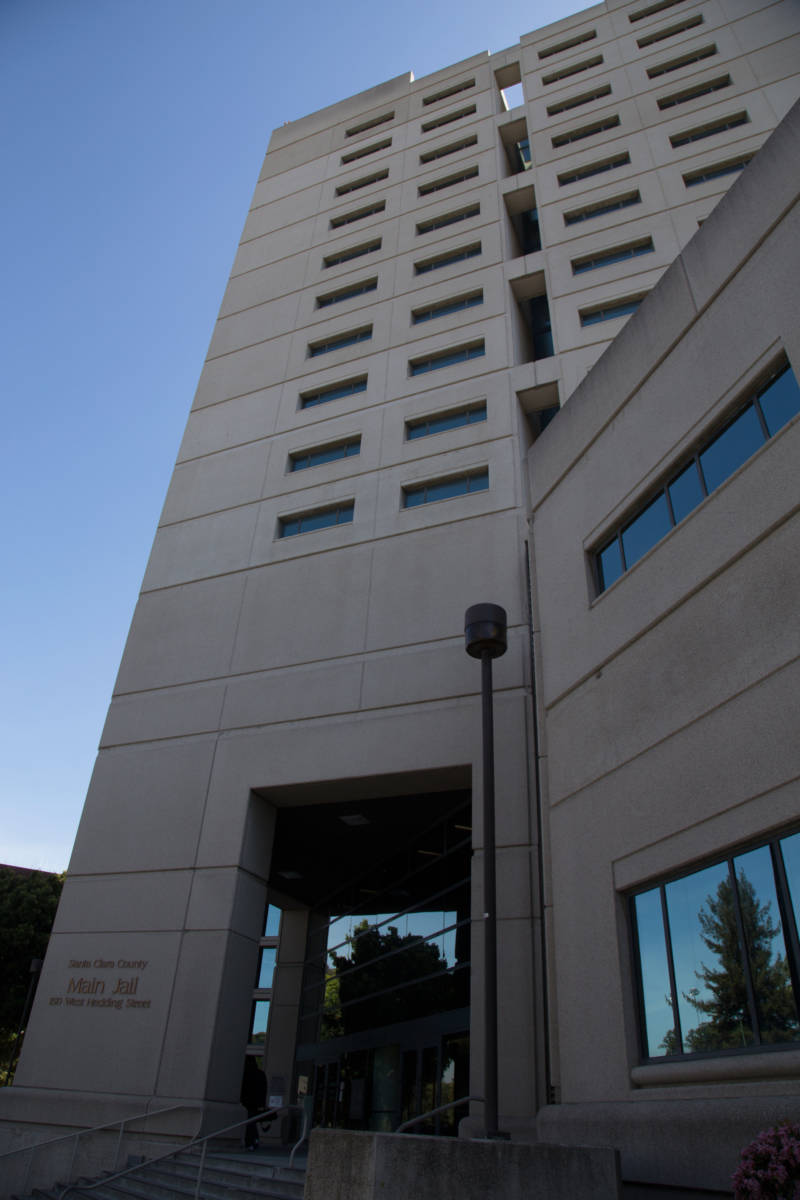Santa Clara County recently agreed to pay $3.6 million to Tyree’s family to settle a civil wrongful death lawsuit.
The family’s attorney, Paula Canny, says the jails are not equipped to provide treatment for inmates with mental illness like Tyree.
“He needed mental health treatment, he was kept in a jail. He did receive medication, but that’s the only treatment that he did. And it’s bad enough that you’re going to neglect somebody, but this isn’t a case of neglect. This is basically a case of abuse and torture.”
A sheriff's investigation found that on the night of Tyree’s death, the three accused deputies entered his cell. Witnesses say they then heard Tyree screaming, “I’m sorry, I’m sorry. Stop.” They also heard "sounds of thumping, wall banging and what sounded like blows on a person's body."
The county medical examiner said Tyree had died of blunt force trauma that ruptured his spleen and liver, causing him to bleed to death internally -- injuries he could not have inflicted on himself.
How Could This Happen?
Tyree’s murder led to soul-searching and a series of investigations about the treatment of inmates in Santa Clara jails.
“I felt very angry and ashamed,” says Santa Clara County Undersheriff Carl Neusel. “We took great pride in hiring the best and in holding our employees accountable, and we thought we had a first-class county jail.”
Neusel says the sheriff immediately increased supervision by adding a lieutenant and sergeant on the overnight shift during which Tyree was killed and installing cameras on the jail floor where Tyree died.
The department also reviewed all inmate use-of-force complaints against deputies for 2015 and found that deputies who worked that shift — known as D shift — received the most complaints.
According to a 2016 grand jury report, 43 percent of inmate complaints of excessive force were filed against deputies on the D shift.
The sheriff brought in federal monitors from the National Institute of Corrections to determine whether the jail’s work culture encouraged mistreatment of inmates. They found pockets of excessive force -- though no systemic problem. But they faulted the sheriff for insufficient staffing and training.
Neusel says the problem became more acute because the number of mentally ill inmates in jails has increased dramatically.
“When you need more psychiatrists, you need more doctors, and you have a higher percentage of seriously mentally ill in our inmate population -- then the custody deputies are faced with a difficult challenge," he says.
Starting in February 2016, new deputies were required to complete a weeklong training in crisis intervention. All staff are required to take a two-day course on how to de-escalate conflict with inmates who suffer from mental illness. A spokesman with the sheriff’s office says they anticipate all badged correctional officers will complete the course by June 30, 2017.
Neusel says the department has noticed a decrease in the use-of-force complaints from inmates and the number of inmate assaults on staff.
But jail staffing vacancies have actually increased since 2015, from 12 to 15 percent.
Santa Clara Advocates Nearing Agreement on Use-of-Force Policy
Meanwhile, a lawsuit brought by inmate advocates with the Prison Law Office prompted negotiations for a new use-of-force policy inside the jails.
“To her credit, the sheriff is taking a very progressive response,” says the nonprofit's director, Don Specter, who could not reveal specifics on the new policy, “There’s much more emphasis on de-escalation, rather than using force to respond to incidents. Much more emphasis on making sure that if force has to be used, it's the least amount of force possible.”
The Board of Supervisors is also championing jail reform, including convening what became known as the Blue Ribbon Commission on Improving Custody Operations in 2015.
LaDoris Cordell, a retired judge who led that effort, says disturbing evidence emerged of widespread abuse of inmates with little accountability.
Cordell says that points to problems at the top.
“It took a murder to get things looked at the way any good leader should have looked at this.” Cordell says. “There should have never been the necessity for a blue-ribbon commission if the person running the operations of the jail was truly paying attention and cared about what was going on.”
On April 12, 2016, the commission presented more than 100 recommendations for supervisors to consider.
Topping that list, “an immediate change in leadership” and the creation of an office of inspector general to provide civilian oversight of the jails.
So far, neither has happened.
Supervisor Joe Simitian convened a panel in September 2016 to discuss some of the options for civilian oversight, and says he hopes the board will approve a plan by summer.
He says people who want to see safer jails need to remain vigilant.
“It’s too easy in the aftermath of a tragedy like this for people to wring their hands, or to raise their voices, express their concern and then watch the issue sort of slip away,” Simitian says.
He created a system for tracking more than 500 recommendations submitted by various agencies and community groups to ensure that supervisors consider and act on each one.
Simitian says real reform won’t happen in weeks or even months, but will take years.

